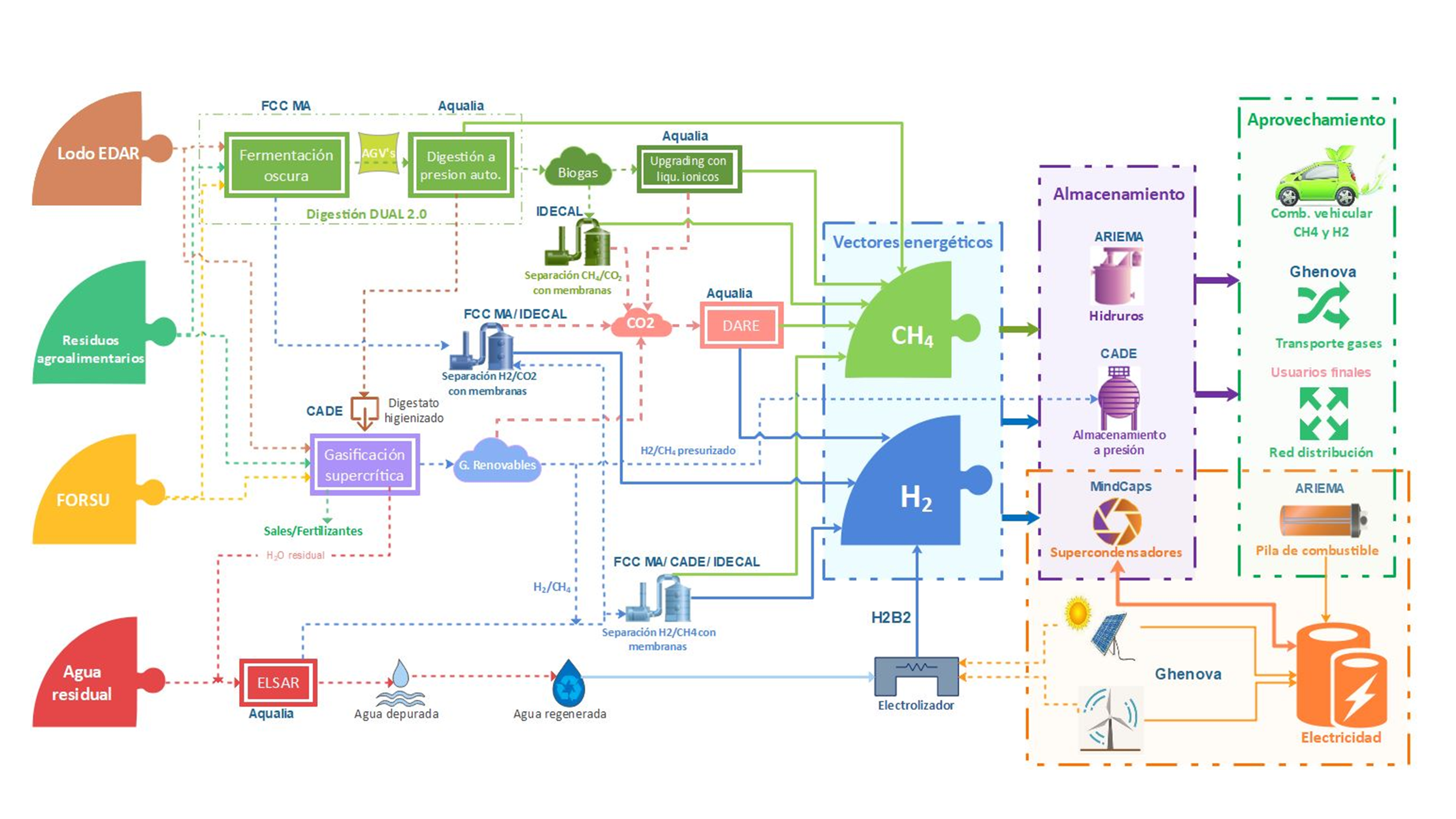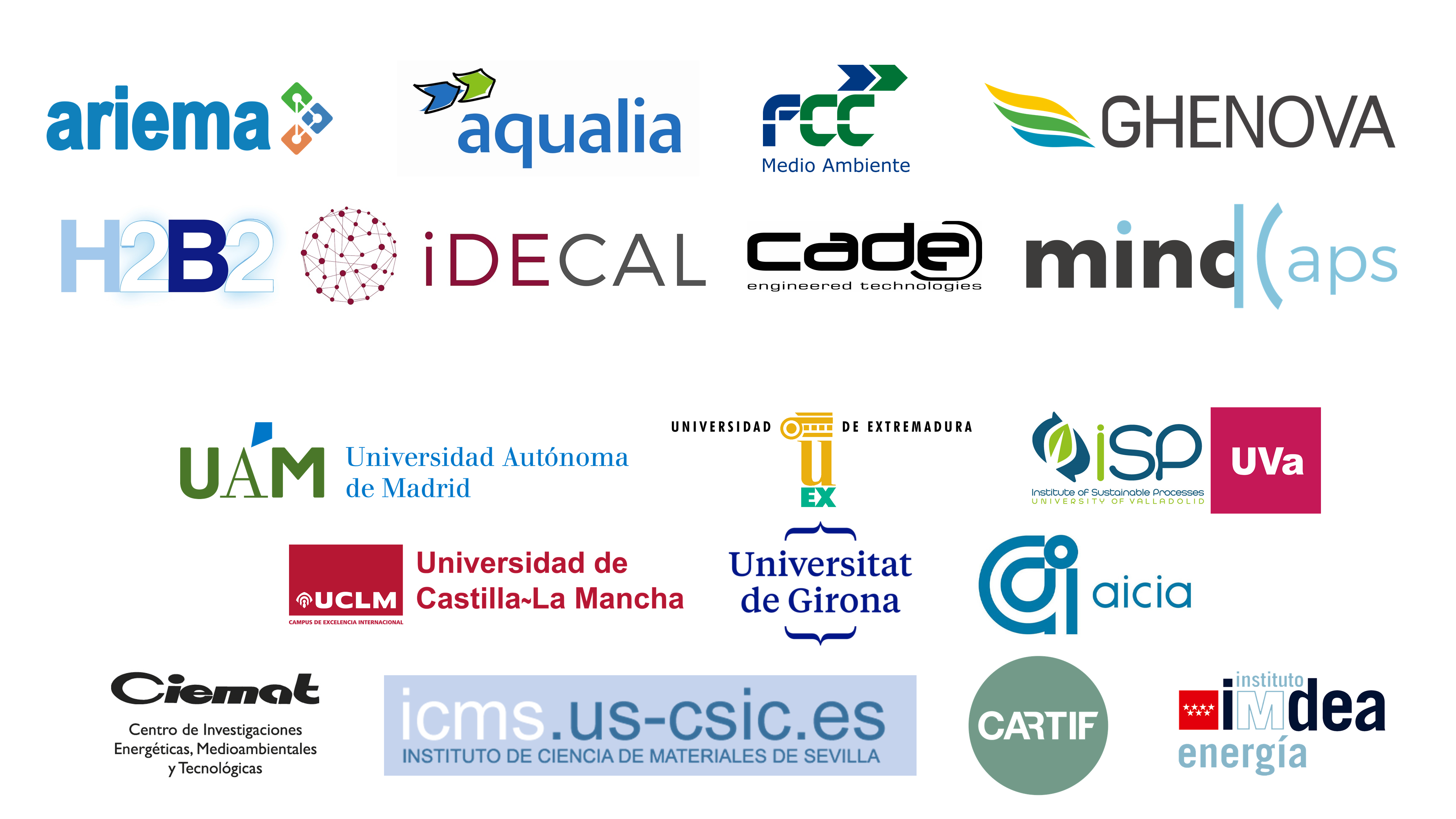
ECLOSION Project
The main objective of the ECLOSION project is to create new materials, technologies, and processes for the generation, storage, and transport of renewable and local hydrogen and biomethane.
This generation of energy vectors will be made from urban waste, agri-food products, wastewater, and sewage sludge. The objective is to provide new technological tools that optimize the profitability of the renewable energy sector, encouraging economic activity and the creation of qualified employment.
The project also proposes the development of energy optimization tools, which implies designing from source to point of consumption energy systems that are eco-efficient, flexible, and intelligent.
This initiative is promoted by a consortium of eight companies led by Aqualia which, together with FCC Environment, CADE, Ghenova, ARIEMA H2B2, Idecal, and MindCaps, are embarking on a project that will last four years (2021-2024).

ECLOSION cuenta con un presupuesto total de 6.602.498€ y una ayuda ECLOSION has a total budget of €6,602,498 and a public grant of €4,451,374.85 from the MISIONES CIENCIA E INNOVACIÓN 2021 call. This grant is subsidized by the CDTI (Centro para el Desarrollo Tecnológico Industrial/ Center for Industrial Technological Development) with the support of the Ministry of Science and Innovation and funding from the European Union through the Next Generation EU programme. This call finances cooperative pre-competitive research projects, led by companies, to achieve:
Relevant research that proposes solutions to transversal and strategic challenges of society.
Improve the base of knowledge and technology on which Spanish companies rely to compete.
Stimulate public-private cooperation
ECLOSION is part of the Mission of promoting safe, efficient, and clean energy for the 21st century. The project will also favor the creation of 15 new highly qualified jobs, of which 10 are expected to be held by women.

The research will be carried out in companies, laboratories and specially equipped infrastructures of the research organizations and in four development centers: the Valladolid Waste Treatment Center (Centro de Tratamiento de Residuos de Valladolid), managed by FCC Medio Ambiente, and the treatment plants in Salamanca, Lleida and Jerez de la Frontera, managed by Aqualia.
ECLOSION seeks new renewable energies models of green hydrogen production which are complementary to electrolysis, and unrelated to the availability of high-quality water and also integrated into a decarbonized energy model under the principles of the circular economy and digitization.
To overcome these challenges, the ECLOSION project is organized into 5 interrelated activities, being the sustainable production of biohydrogen and biomethane the central element, and always from an economically and environmentally sustainable point of view.

In Activity 1 it is proposed to take advantage of the energy content of wastewater for the generation of energy vectors (biohydrogen and biomethane) through bioelectrochemical processes. The residual water will be conveniently regenerated for use in electrolyzers and obtain high-quality hydrogen at reasonable costs. On the other hand, new more efficient biological processes will be investigated for the generation and purification of biohydrogen and biomethane from the organic fraction of solid waste (FORSU), agri-food waste and sewage sludge.
In Activity 2, the catalyzed supercritical water gasification of biowaste, sewage sludge and digestates with a high content of organic matter for the generation of a synthesis gas rich in hydrogen is proposed as a thermochemical treatment. Likewise, it is proposed to investigate a high-pressure storage system to take advantage of the process conditions.
Activity 3 is focused on the study of new processes and materials for the separation of gas mixtures produced with hydrogen, methane and/or carbon dioxide in their composition, in order to generate high quality pure gases. In addition, options for the capture and comprehensive valorization of carbon dioxide generated in all processes will be investigated.
Activity 4 will focus on the storage, transport, and transformation of the energy vectors (hydrogen and methane) generated in the rest of the processes. However, the investigated technological options (AEM and SOFC electrolyzers, fuel cells, hybrid supercapacitors, or hydrogen compression by metal hydrides) will be universally applicable to these vectors regardless of their generation process.
Finally, Activity 5 will address aspects of process integration in a transversal way, through simulation with digital twins and also experimentally.





